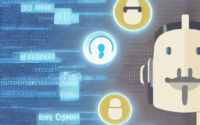Cybersecurity in a Hyperconnected World
Cybersecurity in a Hyperconnected World
Introduction
In today’s hyperconnected world, where everything from our homes to our cars is connected to the internet, cybersecurity has become of utmost importance. With the increasing number of cyber threats and attacks, it is crucial for individuals and organizations to take necessary measures to protect their digital assets. This article will provide an overview of cybersecurity in a hyperconnected world and offer valuable insights on how to ensure your online safety.
Understanding the Cybersecurity Landscape
The cybersecurity landscape is constantly evolving, with new threats emerging every day. Hackers are becoming more sophisticated, targeting not only large corporations but also individuals. It is important to understand common cyber threats such as malware, phishing attacks, ransomware, and social engineering, to develop effective countermeasures.
Building Strong Passwords
One of the simplest yet most effective ways to enhance your cybersecurity is by creating strong and unique passwords. Avoid using easily guessable information like your name or birthdate. Instead, combine a mix of uppercase and lowercase letters, numbers, and special characters. Additionally, consider using a password manager to securely store and generate complex passwords for all your online accounts.
Securing Your Home Network
With the proliferation of smart devices, securing your home network is paramount. Start by changing the default usernames and passwords of your routers and IoT devices. Ensure that your Wi-Fi network is encrypted using Wi-Fi Protected Access 2 (WPA2) or a later version. Regularly update the firmware of your devices to patch any security vulnerabilities. It is also wise to create a separate guest network for visitors to prevent unauthorized access to your main network.
Keeping Software Up to Date
Outdated software is often a gateway for cyber attacks. Hackers exploit known vulnerabilities to gain unauthorized access to your system. Keep all operating systems, applications, and antivirus software up to date. Enable automatic updates whenever possible to ensure you have the latest security patches. Regularly check for updates and install them promptly to minimize the risk of being compromised.
Browsing Safely
Safe browsing practices can significantly reduce the risk of falling victim to cyber threats. Be cautious while clicking on links or downloading attachments from unknown sources. Always verify the authenticity of websites before entering sensitive information. Look for HTTPS in the URL, indicating a secure connection. Use a reputable antivirus software with built-in web protection to block malicious websites automatically.
Protecting Personal Data
In an era where personal data is a valuable commodity, protecting it is essential. Limit the amount of personal information you share online, especially on social media platforms. Be skeptical of requests for personal or financial information, even if they appear to come from legitimate sources. Regularly review your privacy settings and adjust them according to your preferences.
Educating Yourself and Your Team
Cybersecurity is a collective responsibility. Educate yourself and your team about the latest cybersecurity threats and best practices. Stay informed about new attack vectors and trends in the cybersecurity landscape. Conduct regular training sessions to build awareness and teach your team how to identify and respond to potential threats effectively.
Implementing Multi-Factor Authentication
Multi-factor authentication (MFA) adds an extra layer of security to your accounts by requiring more than just a password for authentication. Enable MFA whenever possible, particularly for critical accounts like email, banking, and cloud services. This way, even if your password is compromised, unauthorized access can be prevented.
Backing Up Your Data
Regularly backing up your data is an essential aspect of cybersecurity. In the event of a ransomware attack or system failure, having backups ensures that you can restore your files and continue operations. Utilize both cloud-based and offline backups for redundancy. Test the restoration process periodically to ensure the integrity of your backups.
Conclusion
As our world becomes increasingly hyperconnected, cybersecurity is of paramount importance. By following best practices such as building strong passwords, securing your home network, keeping software up to date, and practicing safe browsing, you can significantly enhance your online safety. Protecting personal data, educating yourself and your team, implementing multi-factor authentication, and regularly backing up your data also contribute to a robust cybersecurity strategy. Stay vigilant, stay informed, and make cybersecurity a top priority to navigate the hyperconnected world securely.


